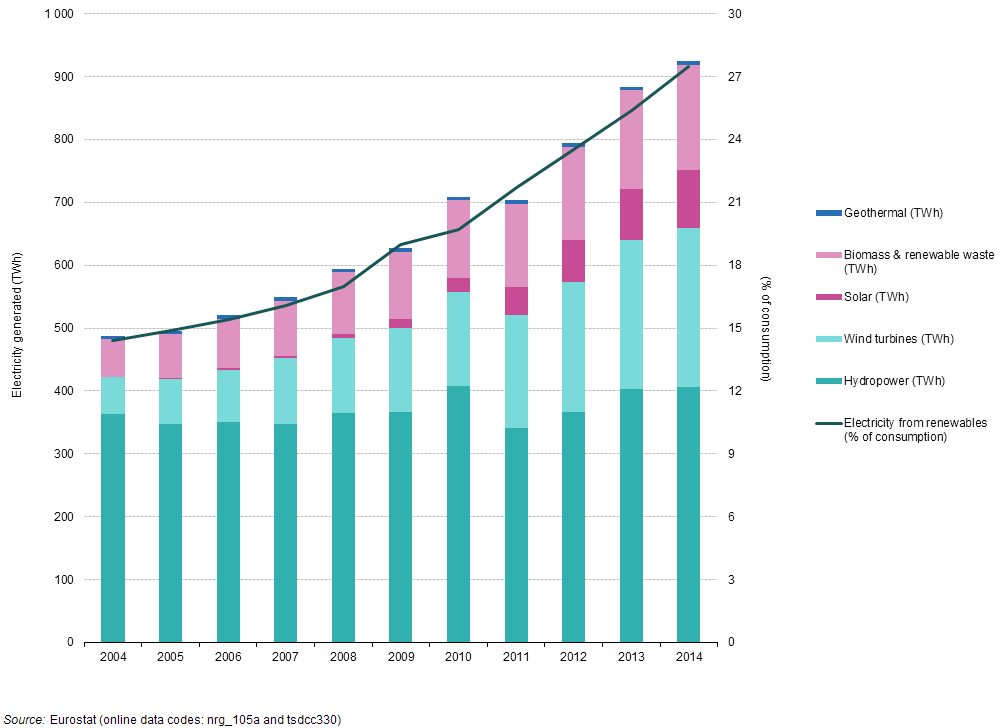The rate of adoption of renewable technology for energy delivery has been nothing short of outstanding: from a near standing start in 2000, several countries are now producing tens of percents of their electrical energy demand from ’new’ (other than hydro) renewable sources.
On the best days and times of day, some countries are today satisfying all of their demand from such sources. On 7 August this year, wind power supplied 106 percent of Scotland’s power needs.
But ‘best days’, and ‘best times of day’ won’t solve our energy problem and may even be contributing to further problems down the road. The best days and times of day (daylight hours in summer) are generally also the times of least energy demand. Sothese milestones, while welcome, may not be as impressive as they first appear. And when renewables generate such a high proportion of energy demand at such times, they can make more continuously available sources of power uneconomic by depressing the wholesale market price of energy to below the incremental cost of generating it.
What then is needed are better ways of balancing supply and demand. And, over time, changing consumer behaviours. But while advances in battery and energy storage technologies are advancing at great speed, the maturity of these technologies and their rate of uptake is well below the levels necessary to address these issues in the short or, even medium term.
Enter the concept of “Über for Electrons”. The energy industry has traditionally focused on supply, but with the exception of some rather basic innovations such as the ‘white meter’ concept in the UK and some more recent experiments, it has not yet explored the opportunities that arise for managing demand.
The second highest requirement for electrical energy comes from residential applications, accounting for nearly 40 percent of total residential use. In the domestic context, most of this energy is used for heat, and heat can be stored relatively easily for extended periods of time. There is therefore a substantial opportunity to manage demand for electrical energy by combining traditional heat storage technologies with recent innovations in dynamic monitoring and control systems enabled by the Internet and the wider “Internet of Things”.
Already we are seeing the first shoots of this new wave of innovation in demand management: a new British company “Cocontrol” which offers a turnkey service primarily aimed at social housing providers and tenants and which enables them to reduce their energy bills. Cocontrol achieves this via a ‘smart box’ that acts as a gate on non-time sensitive power use and which communicates with the grid, halting the use of energy when demand is at its highest.
But these innovations face a number of constraints, as do all such developments that presage the wide scale adoption of products and services from a sector in its embryonic stages of development. These solutions must be:
– Politically acceptable. The solution must be acceptable in the minds of the public and consequently should not favour one segment of the population (such as high earners for example). This is particularly relevant today where politicians are
– Consistent with the regulatory environment. Current regulatory environments for energy distribution are fairly straightforward and focus more on ensuring continuous availability and safety rather than sourcing energy from renewable sources. These engineering led environments are no longer suitable for solutions to our sustainability challenge such as demand response.
– Consistent with the technical environment. Clearly the solution has to work. But a major element of that is not only the solution on its own but the availability of suitable interfaces within the distribution network to enable it to interact with sufficient sophistication to provide an effective solution.
– Use an economically sustainable pricing model. The wave of growth in renewables from 2000 onwards has been driven by political decisions to subsidise them. When the subsidy regime began to incentivise extremely high rates of adoptions excessive public spending was required to maintain it, necessitating a reduction in subsidy levels or even complete cancellation, resulting in the current slowdown of demand for renewables products. Subsidies are no longer viewed as a legitimate vehicle for encouraging adoption and consequently a successful demand response solution must pay its own way.
– Contributory to sustainability goals by ensuring that it prevents the consumption of power when no renewable sources are available and / or prevents the use of fast start-up fossil fuel power sources (such as gas).
They should also ideally promote the maximum use of renewable sources, and drive consumer behaviour towards more responsible energy use and ideally sole use of renewable sources of energy.
Most of these constraints are easily overcome by designing the solution appropriately. But some are also dependent on externalities, and the key external factor here is the regulatory environment. It is increasingly becoming clear that the commercial and technical frameworks for energy distribution are no longer fit for purpose to enable such solutions to operate effectively.
Just as the telecommunications environment has undergone a complete revolution from restricted and vertically integrated dial up telephony to the current state of the Internet, so must the regulatory models for managing the provision of power to consumers and businesses alike.
We therefore need a new approach to the public sector management of power delivery, to free it from the artificial straightjacket of archaic regulatory environments and instead allow power delivery and savings to be part of the same modernised infrastructure enabling continuous interaction between power networks, the devices that consume energy and through them, their users. Just as Über delivers a self-managing system using the latest telecoms and IT infrastructure to enable the most efficient way for drivers and passengers to achieve their goals, so we need to do the same for power (electrons) and devices.
So perhaps the future is even brighter for renewables than we think. When the future also encompasses Über for Electrons.

